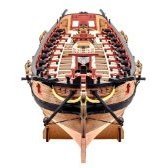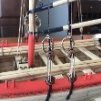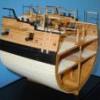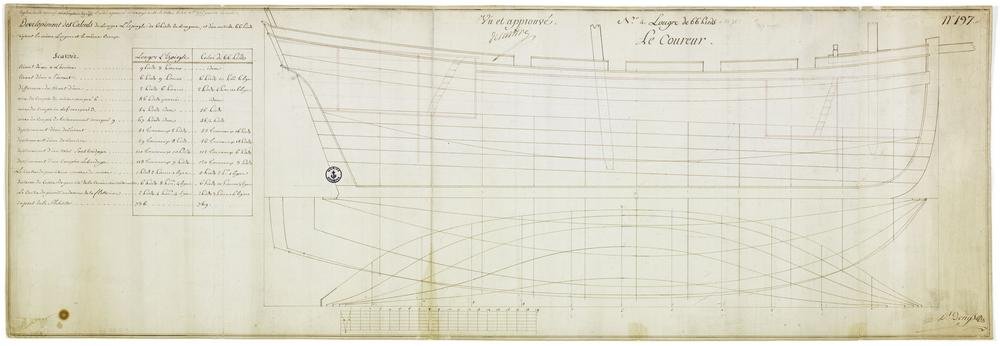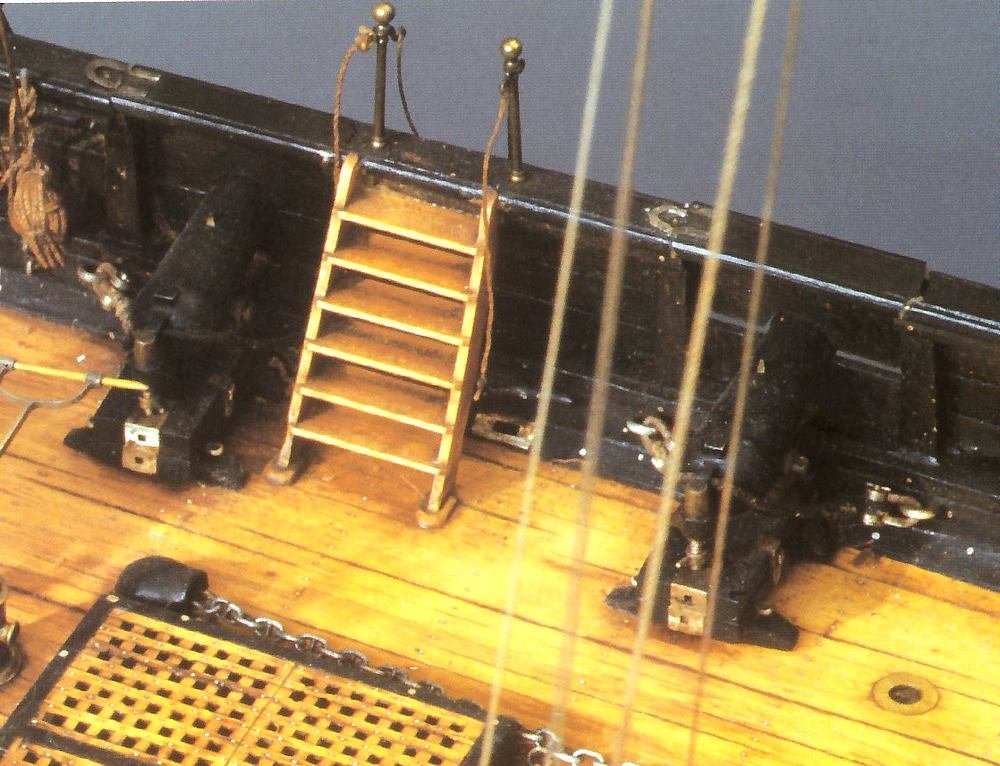-
Posts
187 -
Joined
-
Last visited
Contact Methods
-
Website URL
http://www.gerard-delacroix.fr/
Profile Information
-
Gender
Not Telling
-
Location
Toulouse - France
Recent Profile Visitors
-
 G. Delacroix reacted to a post in a topic:
LA CREOLE/ LA GUADELOUPE by matiz - 1:48 - by Tiziano Mainardi from Boudriot plans
G. Delacroix reacted to a post in a topic:
LA CREOLE/ LA GUADELOUPE by matiz - 1:48 - by Tiziano Mainardi from Boudriot plans
-
 G. Delacroix reacted to a post in a topic:
Le Rochefort by No Idea - 1/24th Scale - First POF Build
G. Delacroix reacted to a post in a topic:
Le Rochefort by No Idea - 1/24th Scale - First POF Build
-
 dvm27 reacted to a post in a topic:
Le Rochefort by No Idea - 1/24th Scale - First POF Build
dvm27 reacted to a post in a topic:
Le Rochefort by No Idea - 1/24th Scale - First POF Build
-
 Hubac's Historian reacted to a post in a topic:
Le Rochefort by No Idea - 1/24th Scale - First POF Build
Hubac's Historian reacted to a post in a topic:
Le Rochefort by No Idea - 1/24th Scale - First POF Build
-
 Some Idea reacted to a post in a topic:
Le Rochefort by No Idea - 1/24th Scale - First POF Build
Some Idea reacted to a post in a topic:
Le Rochefort by No Idea - 1/24th Scale - First POF Build
-
 Keith Black reacted to a post in a topic:
Le Rochefort by No Idea - 1/24th Scale - First POF Build
Keith Black reacted to a post in a topic:
Le Rochefort by No Idea - 1/24th Scale - First POF Build
-
 G. Delacroix reacted to a post in a topic:
Le Rochefort by No Idea - 1/24th Scale - First POF Build
G. Delacroix reacted to a post in a topic:
Le Rochefort by No Idea - 1/24th Scale - First POF Build
-
 G. Delacroix reacted to a post in a topic:
Le Rochefort by No Idea - 1/24th Scale - First POF Build
G. Delacroix reacted to a post in a topic:
Le Rochefort by No Idea - 1/24th Scale - First POF Build
-
 G. Delacroix reacted to a post in a topic:
L'Anémone 1747 by Willi - FINISHED - 1:48 - French corvette
G. Delacroix reacted to a post in a topic:
L'Anémone 1747 by Willi - FINISHED - 1:48 - French corvette
-
 G. Delacroix reacted to a post in a topic:
Le Rochefort by No Idea - 1/24th Scale - First POF Build
G. Delacroix reacted to a post in a topic:
Le Rochefort by No Idea - 1/24th Scale - First POF Build
-
 G. Delacroix reacted to a post in a topic:
Le Rochefort by No Idea - 1/24th Scale - First POF Build
G. Delacroix reacted to a post in a topic:
Le Rochefort by No Idea - 1/24th Scale - First POF Build
-
 catopower reacted to a post in a topic:
Le Coureur 1776 - Shipyard 1:72-scale Laser-Cut Card Model Kit
catopower reacted to a post in a topic:
Le Coureur 1776 - Shipyard 1:72-scale Laser-Cut Card Model Kit
-
 Canute reacted to a post in a topic:
Le Coureur 1776 - Shipyard 1:72-scale Laser-Cut Card Model Kit
Canute reacted to a post in a topic:
Le Coureur 1776 - Shipyard 1:72-scale Laser-Cut Card Model Kit
-
 Canute reacted to a post in a topic:
Le Coureur 1776 - Shipyard 1:72-scale Laser-Cut Card Model Kit
Canute reacted to a post in a topic:
Le Coureur 1776 - Shipyard 1:72-scale Laser-Cut Card Model Kit
-
 G. Delacroix reacted to a post in a topic:
Le Rochefort by No Idea - 1/24th Scale - First POF Build
G. Delacroix reacted to a post in a topic:
Le Rochefort by No Idea - 1/24th Scale - First POF Build
-
 GrandpaPhil reacted to a post in a topic:
Le Coureur 1776 - Shipyard 1:72-scale Laser-Cut Card Model Kit
GrandpaPhil reacted to a post in a topic:
Le Coureur 1776 - Shipyard 1:72-scale Laser-Cut Card Model Kit
-
Hello, Admiral Pâris relied on existing plans in the naval archives for his older ships. At that time, research on naval architecture was less advanced, and the drawings in his collection of plans are sometimes questionable. In the case of Le Coureur, he simply used the original plan referenced D1_63-13 from the archives (see below), adding the masts and rigging. As for the AAMM plans, they were largely copied from Pâris's albums and made usable by modelers without further research.
- 12 replies
-
- Le Coureur
- Shipyard
-
(and 1 more)
Tagged with:
-
 GrandpaPhil reacted to a post in a topic:
Le Coureur 1776 - Shipyard 1:72-scale Laser-Cut Card Model Kit
GrandpaPhil reacted to a post in a topic:
Le Coureur 1776 - Shipyard 1:72-scale Laser-Cut Card Model Kit
-
I know nothing about kit manufacturing, but I find it surprising that Shipyard didn't follow the very detailed capture plan for Le Coureur." This reproduction is quite approximate, both in terms of shape and equipment. But there are probably technical and economic considerations behind this.
- 12 replies
-
- Le Coureur
- Shipyard
-
(and 1 more)
Tagged with:
-
 G. Delacroix reacted to a post in a topic:
Le Rochefort by No Idea - 1/24th Scale - First POF Build
G. Delacroix reacted to a post in a topic:
Le Rochefort by No Idea - 1/24th Scale - First POF Build
-
 G. Delacroix reacted to a post in a topic:
La Renommee 1744 by ChrisLBren - 1/48 - 2025
G. Delacroix reacted to a post in a topic:
La Renommee 1744 by ChrisLBren - 1/48 - 2025
-
 cotrecerf reacted to a post in a topic:
L'Amarante by marsalv - 1:36 - POF
cotrecerf reacted to a post in a topic:
L'Amarante by marsalv - 1:36 - POF
-

L'Amarante by marsalv - 1:36 - POF
G. Delacroix replied to marsalv's topic in - Build logs for subjects built 1501 - 1750
Hello, I didn't draw this door because, indeed, if it leads to the deck, it can't open. There's a sort of small partition missing, a threshold that starts on the deck and goes up to the start of the partition. It was forgotten. Apologies for this small anomaly, which has the advantage of highlighting this oversight. But it's really a small detail that can be easily rectified and doesn't detract from the quality of Marsalv's construction. GD -
Hello, Admittedly, this ship never existed, but the model was built according to the customs in use in France at that time. It is therefore not an imaginary ship, but rather a model consistent with the ships of the mid-18th century that we know so well. It would be too time-consuming to draw up a list of all the anomalies in this model. I will send you some photos of the Dauphin-Royal so you can judge for yourself the many modifications that need to be made to your 3D model. Unfortunately, it is too late for the “wooden” model. What I can tell you is to forget about the overly large, decorated railings and the ball racks along the gratings, as these features were unknown in France at that time. However, I would like to point out a major problem that immediately discredits this model: the shape of the hull, which is not typical of French design, particularly the excessive angle of the sternpost. Another important point is to review the bow and the deck layout. Feel free to ask me any questions, as some of the equipment has disappeared from this model, but their locations are still visible. Send me your email address in a PM so I can send you the photos via WeTransfer.
-
Hello, I don't want to be mean or unpleasant, but after examining this model, while we can congratulate the model maker(s) who created it, the same cannot be said for the reconstruction of the plan itself. I dont know the origin of the plan or the sources used by Igor, but this reconstruction is full of design anomalies. I will not go into detail about all the errors concerning the ship's architecture and equipment, as the list would be embarrassingly long. However, the design effort should be commended because it requires a lot of work but also, and this is very important for the credibility of the model, a lot of knowledge and references that are clearly not present. As we must pay tribute to the work of these model makers, we should call this model "Variation on Le Dauphin Royal". GD
-
Hello, I cannot tell you about the current projects at Editions ANCRE because the few authors (we are only three...) rarely communicate with each other. I have no idea what monograph JC Lemineur is working on and even if he has a project in progress. Since F. Fissore has specialized in small Italian ships, I doubt that he will propose a substantial monograph on a ship in the French Navy. On the other hand, Didier Berti, the boss of ANCRE, does not "request" a monograph on this or that ship but is content to publish and ensure the distribution of the books. It is therefore the authors, and they alone, who determine their future studies. On the three wishes that you have expressed, (and without coming out of Aladdin's lamp), I can give you the following details. - L' Unité, La Tourterelle: it so happens that I had started the study of this corvette in parallel with my current project. It is the latter that currently occupies me and probably for several more years. This corvette could indeed make the connection between the two other corvettes of the collection, i.e. between L' Amarante of 1744 and La Créole of 1838 and I have long noticed this "gap" between the two periods. For a future project perhaps. - La Renommée/La Romaine: these two frigates are structurally very similar since they were built about ten years apart and their framework, since that is what interests you, is not really very far apart. The problem lies rather in the fact that these two 18/24 frigates are of the same generation as L' Egyptienne whose monograph was published less than five years ago. Frankly, I dont see myself doing a study on a ship almost similar to the one studied so recently. The time needed to study a ship is significant, of the order of three to four years. This is why it is necessary to make a judicious choice in the projects and I try to produce unpublished monographs on little-studied subjects. My current occupations apply to a ship few represented in the French Navy, it is an artillery pram otherwise called floating battery. The construction is very atypical as I like them but on the other hand, it is a very complicated frame both to study it and to build it for the (I hope) future models. This ship dates from 1760 but you can see one of its "sister-ships" a little later here: https://mnm.webmuseo.com/ws/musee-national-marine/app/collection/record/9024 GD
-
Hello, There is a very detailed monograph about galleys at Ancre Publications. And a version translated into English. Here : https://ancre.fr/en/monograph/106-la-fleur-de-lis-galere-1690.html GD
- 176 replies
-
- la reale de france
- heller
-
(and 2 more)
Tagged with:
-
Hello, The recommendations of captains upon returning from campaigns were normally followed if they did not entail excessive expenses. For a false keel 11 cm thick (the ship is small), it is within the realm of possibility. Real anti-drift keels did not appear until the end of the 18th century. The experience acquired on one construction must logically appear on subsequent constructions but, at the time, ships were built by several different builders and each applied their own experience. The false keel is a minor part which often appears as natural in the construction of the hull even if it is not mentioned in the specifications. GD
-
Hello The false keel is used to preserve the keel and to prevent a little the leeway (the drift). On French ships, it is generally only 4 to 5 inches (French) thick, or approximately 11/14 cm. This value does not affect the draft value significantly. On the other hand, its protective role is very important. However, you should know that not all ships have a false keel. In the report published at the end of the monograph, there is no mention of gripe, it does not exist in the French navy. The text cites an iron stirrup intended to prevent the rudder from being engaged by an anchor cable. We can also observe this stirrup on the plans of the monograph. GD
About us
Modelshipworld - Advancing Ship Modeling through Research
SSL Secured
Your security is important for us so this Website is SSL-Secured
NRG Mailing Address
Nautical Research Guild
237 South Lincoln Street
Westmont IL, 60559-1917
Model Ship World ® and the MSW logo are Registered Trademarks, and belong to the Nautical Research Guild (United States Patent and Trademark Office: No. 6,929,264 & No. 6,929,274, registered Dec. 20, 2022)
Helpful Links
About the NRG
If you enjoy building ship models that are historically accurate as well as beautiful, then The Nautical Research Guild (NRG) is just right for you.
The Guild is a non-profit educational organization whose mission is to “Advance Ship Modeling Through Research”. We provide support to our members in their efforts to raise the quality of their model ships.
The Nautical Research Guild has published our world-renowned quarterly magazine, The Nautical Research Journal, since 1955. The pages of the Journal are full of articles by accomplished ship modelers who show you how they create those exquisite details on their models, and by maritime historians who show you the correct details to build. The Journal is available in both print and digital editions. Go to the NRG web site (www.thenrg.org) to download a complimentary digital copy of the Journal. The NRG also publishes plan sets, books and compilations of back issues of the Journal and the former Ships in Scale and Model Ship Builder magazines.





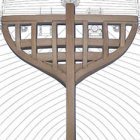
.thumb.jpeg.fc5d633a7b34428fcf19419a73d56d55.jpeg)
